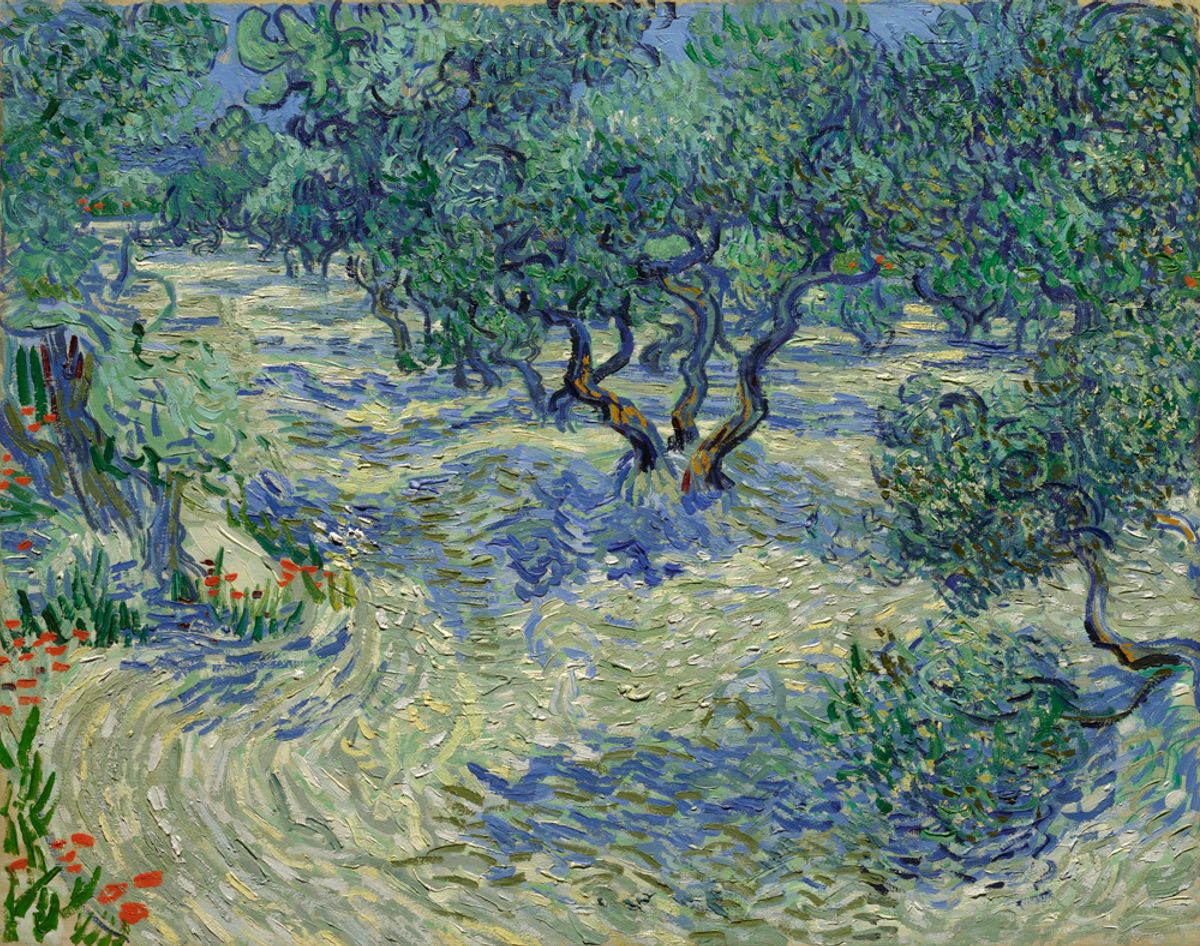A grasshopper has been found embedded in a Van Gogh painting of an olive grove at the Nelson-Atkins Museum of Art in Kansas City. Conservators initially hoped that this might help date the picture, which was done while the artist was living at the asylum in Saint-Rémy-de-Provence, in the south of France.
The grasshopper was spotted under a microscope by the museum’s conservator Mary Schafer, who is helping to research an online catalogue of its French paintings. The insect is in the lower foreground of the Van Gogh landscape, but is not easily visible to the naked eye.

Nelson-Atkins Museum
Olive Trees was probably painted outdoors at some point during the summer of 1889, in one of the groves just outside the asylum. The lack of movement in the surrounding paint suggests that the grasshopper made no attempt to escape, so the insect was presumably already dead when it became embedded. Grasshoppers develop with the seasons, but since the insect in Van Goghs’s paint was no longer alive, it does not help in dating the picture.
Van Gogh wrote several times about his delight at cicadas flying in the olive groves in the summer heat and he once sketched three of the insects in a letter to his brother. However, although there are some superficial similarities with grasshoppers, cicadas are a different type of insect.
An examination of the Nelson-Atkins Olive Grove has also revealed that Van Gogh’s red pigment has faded, distorting the painting’s colouration.


